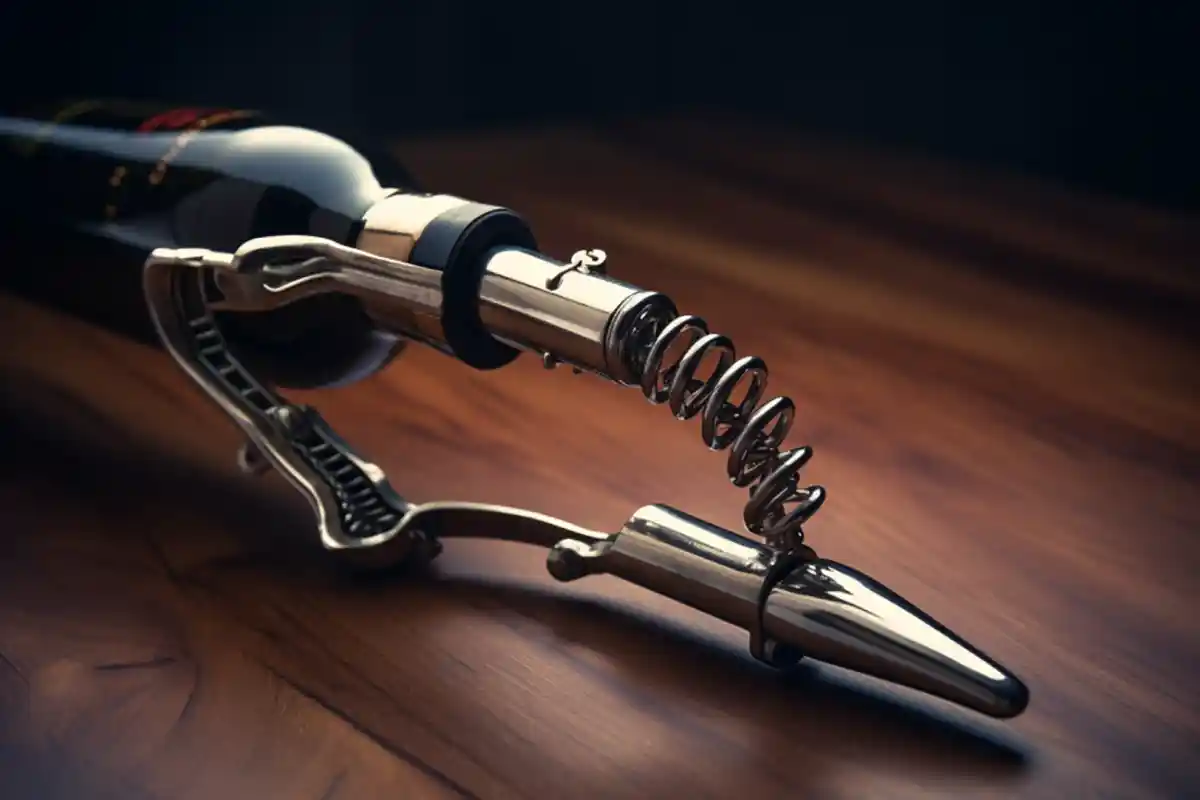Learn how to master the art of using a corkscrew with this step-by-step guide. From choosing the right corkscrew to opening a bottle of wine flawlessly, become an expert in no time!
Introduction
Welcome to the comprehensive step-by-step guide on mastering the art of using a corkscrew! Opening a bottle of wine with elegance and ease is an essential skill for any wine enthusiast or aspiring sommelier. Whether you’re a seasoned connoisseur or a novice wine lover, this guide will equip you with the knowledge and techniques to handle any corkscrew like a pro.
Mastering the Art of Using a Corkscrew: A Skill Worth Learning
In this section, we’ll delve into why mastering the art of using a corkscrew is vital for wine lovers and professionals alike. We’ll explore how this skill enhances the overall wine-drinking experience and sets the stage for appreciation and enjoyment.
Types of Corkscrews and Their Features
Understanding the various types of corkscrews available and their unique features is the first step toward mastering this art. From traditional waiter’s corkscrews to lever-style and winged corkscrews, each design offers distinct advantages. Let’s explore these different corkscrew types and their benefits:
1. The Waiter’s Corkscrew: Classic and Versatile
The waiter’s corkscrew, also known as the sommelier’s or wine key, is the most classic and widely used type of corkscrew. Its compact design makes it a popular choice among professionals and enthusiasts alike.
2. Lever-Style Corkscrew: Effortless Extraction
The lever-style corkscrew, often called the rabbit or screwpull, offers a unique and effortless cork removal mechanism. Discover how this innovative design simplifies the uncorking process.
3. Winged Corkscrew: User-Friendly and Efficient
The winged corkscrew, recognizable by its two wings, provides excellent leverage for quick and straightforward cork extraction. Uncover the advantages and potential drawbacks of this popular corkscrew.
4. Electric Corkscrew: Powered Convenience
Electric corkscrews take the strain out of cork removal by doing the work for you. Explore the benefits and considerations of using an electric corkscrew in your wine routine.
Selecting the Perfect Corkscrew for Your Needs
Now that we’ve covered the different types of corkscrews, it’s essential to choose the perfect one that suits your preferences and needs. This section will guide you through the factors to consider when selecting the ideal corkscrew:
5. Ergonomics and Grip: Comfort Matters
A comfortable grip is crucial for smooth and steady cork extraction. Learn how to evaluate the ergonomics of a corkscrew to ensure a seamless uncorking experience.
6. Durability and Material: Longevity Matters
Investing in a high-quality corkscrew ensures it will withstand the test of time and countless bottles of wine. Discover which materials are best for durability and longevity.
7. Portability: On-the-Go Wine Adventures
If you enjoy wine on picnics or outdoor adventures, a portable corkscrew is essential. Find out which types of corkscrews are best suited for your on-the-go wine escapades.
8. Cork Presentation: For Wine Connoisseurs
For wine enthusiasts who value the aesthetics of cork presentation, certain corkscrews offer a clean and intact cork removal. Explore how to preserve corks for sentimental purposes or wine collection displays.
Step-by-Step Guide to Corkscrew Mastery
Now, let’s dive into the practical aspect of mastering the art of using a corkscrew. We’ll provide a detailed step-by-step guide, along with helpful tips, to ensure you can confidently open any wine bottle with precision and finesse.
9. Prepare Your Workspace: Clean and Organized
Before starting, ensure your workspace is clean, well-lit, and free of any distractions. Organize your tools, including the corkscrew, wine glass, and a cloth for spills.
10. Remove the Foil: Expose the Cork
Use the foil cutter or a sharp knife to remove the foil covering the top of the wine bottle. This step exposes the cork and prepares it for extraction.
11. Position the Corkscrew: Centered and Aligned
Hold the corkscrew vertically and position the tip in the center of the cork. Make sure it’s straight and aligned to prevent any breakage.
12. Initial Insertion: Steady and Controlled
Gently and steadily twist the corkscrew’s tip into the cork until you reach the screw’s last coil.
13. Lever Placement: Secure and Balanced
If you’re using a waiter’s corkscrew, open the lever to form a 90-degree angle with the bottleneck. For lever-style corkscrews, make sure the lever is in an open position.
14. Cork Extraction: Smooth and Gradual
Hold the bottleneck firmly with one hand and use the corkscrew’s lever or wings to extract the cork slowly and steadily.
15. Final Cork Release: Gentle and Controlled
Once the cork is almost out, use your hand to gently guide it out of the bottle. Be cautious not to let the cork pop out too forcefully.
16. Inspect the Cork: Assess for Quality
Examine the extracted cork for any signs of damage or crumbling. A well-preserved cork indicates proper storage and handling of the wine.
17. Pour and Enjoy: Savor the Moment
With the cork successfully removed, pour the wine into your glass and take a moment to appreciate your cork-pulling achievement before savoring each sip.
Common Corkscrew Challenges and Troubleshooting Tips
Even with careful technique, occasional challenges may arise during the uncorking process. In this section, we’ll address common corkscrew issues and provide troubleshooting tips:
18. Cork Breakage: What to Do?
Discover how to handle a broken cork inside the bottle without compromising the wine’s integrity.
19. Difficult Cork Removal: Stuck Cork Solutions
If the cork is stubborn, learn alternative methods to extract it safely and effectively.
20. Broken Corkscrew: Salvaging the Situation
Find out how to remove a cork when the corkscrew breaks midway through the extraction process.
21. Crumbling Cork: Filtering the Wine
When the cork crumbles, prevent cork particles from entering your wine with easy filtration techniques.
22. Preventing Cork Contamination: Best Practices
Explore preventive measures to ensure corks remain clean and free from contaminants.
23. Saving Partially Consumed Wine: Preserving Freshness
Learn how to recork and store a partially consumed bottle of wine to maintain its quality.
Frequently Asked Questions (FAQs)
In this section, we’ll address some of the most frequently asked questions related to mastering the art of using a corkscrew:
Can I use a corkscrew on all types of wine bottles?
Yes, a corkscrew can be used on traditional wine bottles sealed with cork closures. However, it’s essential to choose the appropriate corkscrew for the type of cork used.
How do I clean and maintain my corkscrew?
To ensure the longevity of your corkscrew, clean it after each use with warm, soapy water and a soft brush. Additionally, lubricate the screw occasionally with food-grade mineral oil.
Are there corkscrews suitable for people with hand mobility issues?
Yes, there are corkscrews designed with ergonomic handles and lever systems that are ideal for individuals with hand mobility challenges.
Can I use an electric corkscrew on vintage wines?
While electric corkscrews are convenient, they may not be suitable for vintage wines with delicate corks. Manual corkscrews offer more control in such cases.
What should I do if the cork starts to crumble during extraction?
If the cork begins to crumble, try twisting it back into the bottle and then recorking it with a new, intact cork to preserve the wine’s integrity.
How do I present a removed cork as a keepsake?
To present a removed cork as a keepsake, gently clean it, allow it to dry completely, and store it in a safe and dry place.
Conclusion
Congratulations! You’ve now become a master at using a corkscrew. From selecting the perfect corkscrew to executing a flawless cork extraction, you have the skills to enhance your wine experience. Remember, practice makes perfect, so continue to refine your technique and savor the joy of opening wine bottles with finesse.



